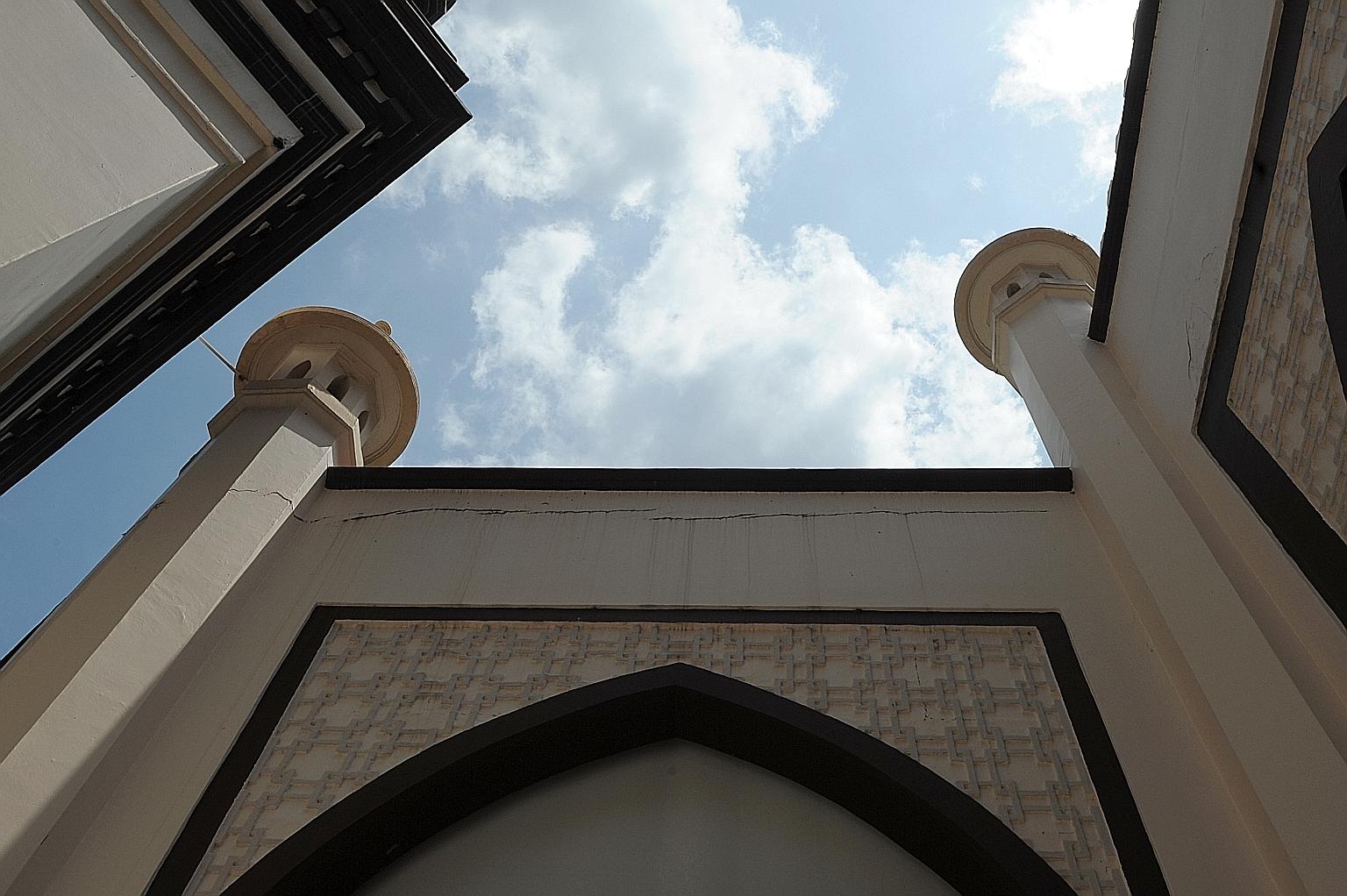Mosque to be restored but 'leaning tower' to stay
Restoration work will reinforce minaret's hand-made bricks to stop moisture seepage
Sign up now: Get ST's newsletters delivered to your inbox

The Hajjah Fatimah Mosque, opened in 1846 in Beach Road, will undergo a year-long restoration to address issues such as moisture damage or plaster cracks on walls.
ST PHOTO: AZMI ATHNI
Melody Zaccheus
Follow topic:
Singapore's own "leaning tower" - the Hajjah Fatimah Mosque's minaret, which tilts at an angle of six degrees - will be restored to its former glory.
Although the slant will remain, the structure, alongside the rest of the 1846 compound, will undergo a year-long $500,000 restoration to address issues such as moisture damage or plaster cracks on walls.
The project will be co-funded under the National Monuments Fund, administered by the Preservation of Sites and Monuments (PSM) division. The National Heritage Board (NHB) said yesterday $2.22 million of the $9.77 million set aside to co-fund the restoration of national monuments will be disbursed this year to eight recipients, including the mosque and St Joseph's Church.
To qualify for the grant, the monuments must be non-profit or religious. Of the 72 here, 31 are eligible.
Mr Alsagoff Mohdar, 74, chairman of Hajjah Fatimah's mosque management board, said: "The restoration could transform it into a more conducive place of worship for Muslims, make it more presentable for the tourists who often come by."
Based on old maps, the land on which the Beach Road mosque sits used to be a mangrove swamp, a factor contributing to the moisture damage across the site.
The tilt of the minaret is a result of its hand-made bricks. They are less compact than machine-made ones, resulting in moisture seepage and shifting over time, said Mr Chern Jia Ding, assistant director of PSM's architecture and inspectorate.
While the tilt cannot be rectified, steps have been taken to monitor the slant. To deal with weakening bricks, salt will be extracted from the structure. Chemicals will be injected into it to form a water barrier. Existing layers of paint will be stripped away and replaced by a new coat of mineral paint.
Another recipient of the restoration fund is the Cathedral of the Good Shepherd. The ongoing restoration of the Queen Street building, to finish in the third quarter of the year, is slated to receive $1.37 million from the authorities. PSM had disbursed close to $1.49 million under the first tranche of the fund, which was introduced in 2008.
The funding for the cathedral will partly cover structural reinforcement work. The total cost of restoring the monument is $11.8 million.
Mr Lim Boon Heng, former Cabinet minister and chairman of the steering committee for the restoration and renovation of the cathedral, described it as a long journey.
The work involved restoring its neo-classical ceiling and retiling its floors to mirror its original design. There is still more to be done - another $2 million is needed for the construction project, which is expected to cost about $40 million in all. This includes the restoration of a two-storey rectory and the building of a new three-storey block.
Mr Lim said: "We have to make sure this monument stays a long, long time for Singaporeans. It's part of the collective memory of Singaporeans, not just Catholics."

